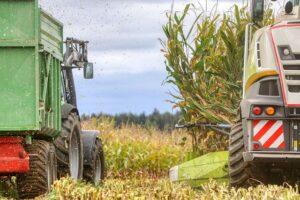Climate change and market price explosions are becoming a growing problem for Hungarian producers
For decades, Hungarian agriculture has been based on the cultivation of wheat, corn, sunflower, barley, rapeseed and soybeans, as these crops are best suited to the climate and market conditions of our country. However, players in the sector are increasingly recognizing the need to include new crops, which would not only help farmers to make a stable living, but also to promote the sustainability of the agricultural sector. In the coming years, the question is how support systems, breeding innovations and the development of production technologies will shape the future of Hungarian agriculture – writes Agrárszektor.

Experts from Corteva Agriscience, KWS and RAGT agree that climate change and market price explosions are increasingly a problem for Hungarian producers. Drought, extreme weather conditions and rising production costs have a significant impact on farmers’ decisions. While early-maturing corn varieties have always been in high demand, in recent years hybrids with longer growing periods have also matured under changed climatic conditions.
According to Corteva’s analyses, farmers’ willingness to sow varies from region to region, largely depending on the previous year’s yields and the climatic conditions of the given area. In areas that are less affected by drought, there is a greater willingness to sow corn, while in regions with severe drought, farmers are increasingly looking for alternative crops.
According to experts, Hungary should not rely solely on the production of corn and wheat. Although there is currently no crop that can completely replace corn, sorghum, for example, is of increasing interest due to its lower water requirements and drought tolerance. KWS and RAGT experts emphasized that farmers should take into account the characteristics of their own area and climate trends when choosing crops.
According to RAGT, Hungarian producers have been switching to shorter growing season crops in recent years to reduce drying costs and minimize crop losses due to drought. However, in the long term, producers need to consider whether shorter growing season hybrids really provide them with adequate yields.
Related news
AM: Government helps farmers with a loan moratorium
🎧 Hallgasd a cikket: Lejátszás Szünet Folytatás Leállítás Nyelv: Auto…
Read more >More than 100 Hungarian farmers also demonstrated in Brussels
🎧 Hallgasd a cikket: Lejátszás Szünet Folytatás Leállítás Nyelv: Auto…
Read more >Too many gifts, too much food: our holiday excesses are putting a serious strain on the environment
🎧 Hallgasd a cikket: Lejátszás Szünet Folytatás Leállítás Nyelv: Auto…
Read more >Related news
Even though the price of cocoa has halved, chocolate will not become cheaper
🎧 Hallgasd a cikket: Lejátszás Szünet Folytatás Leállítás Nyelv: Auto…
Read more >Temu is crushing domestic webshops – Christmas won’t change either
🎧 Hallgasd a cikket: Lejátszás Szünet Folytatás Leállítás Nyelv: Auto…
Read more >The Hungarian Food Bank is putting together 44,000 food packages from the proceeds of ALDI’s first Advent market
🎧 Hallgasd a cikket: Lejátszás Szünet Folytatás Leállítás Nyelv: Auto…
Read more >






